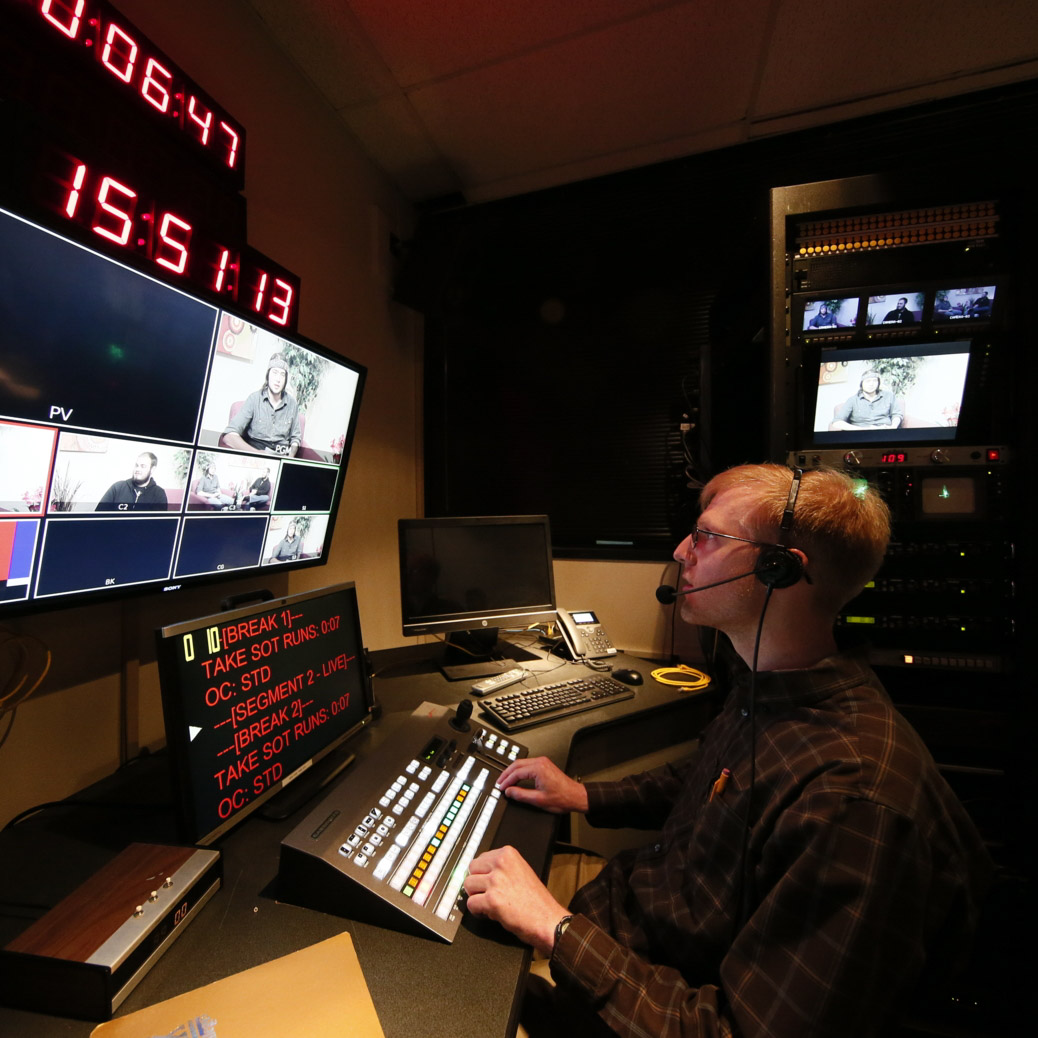Degree Type: Associate of Applied Science Degree, AAS, Certificate, CER
Pathway: Technical and Professional Studies
Do you have a passion for storytelling and content creation? The Broadcasting & Electronic Media program at PPSC provides hands-on training in video and audio production, content creation, and program development. You’ll write, produce, and package content for various platforms, from broadcast to YouTube and Vimeo. To boost your learning, you’ll also complete internships at local broadcast or video production facilities. Choose from our associate degree or certificate options and start building the skills to produce and distribute media across different platforms.

The AAS degree in BEM will prepare you to enter the television, radio, and online content creation industries. In addition to course work, and to enhance the learning process, you will also complete internships at local broadcast and/or video production facilities.
Students who elect to complete an Advanced Radio Production and Operations certificate learn specialized broadcast skills in a shorter period of time than they would with an Associate of Applied Science degree. Students learn about radio programming, formats, and audience rating surveys, professional writing techniques for television and radio, corporate scriptwriting, as well as news and sports writing, and the role of the Federal Communications Commission.
Students who elect to complete an Advanced Television and Video Production certificate learn specialized broadcast skills in a shorter period of time than they would with an Associate of Applied Science degree. Students learn about television production, from concept through script to actual studio production, preproduction, and postproduction, professional writing techniques for television and radio, corporate scriptwriting, as well as news and sports writing.
Students who elect to complete a Basic Radio and Audio Production certificate learn specialized broadcast skills in a shorter period of time than they would with an Associate of Applied Science degree. Students learn about radio programming, formats, and audience rating surveys, professional writing techniques for television and radio.
Students who elect to complete a Basic Television and Audio Production certificate learn specialized broadcast skills in a shorter period of time than they would with an Associate of Applied Science degree. Students learn about television production, from concept through script to actual studio production, preproduction, and postproduction.
Design a future that puts your talent and creativity to work! We provide you with the latest skills and tools needed for a career in print design, web, video, and motion graphics. You'll master best practices and design trends, including color theory, layout, illustration, and production.
Explore Multimedia Graphic DesignDo you enjoy capturing images and telling stories? PPSC’s Professional Photography program teaches you the technical skills, creative techniques, and industry insights needed to succeed. Explore the history of photography, learn from industry experts with real-world experience, and expand your skills through internships with top local photographers.
Explore Professional Photography